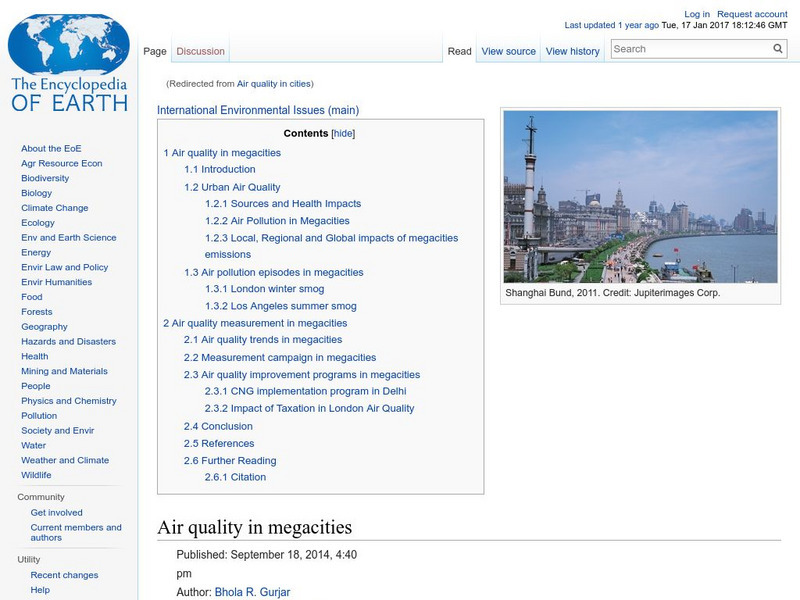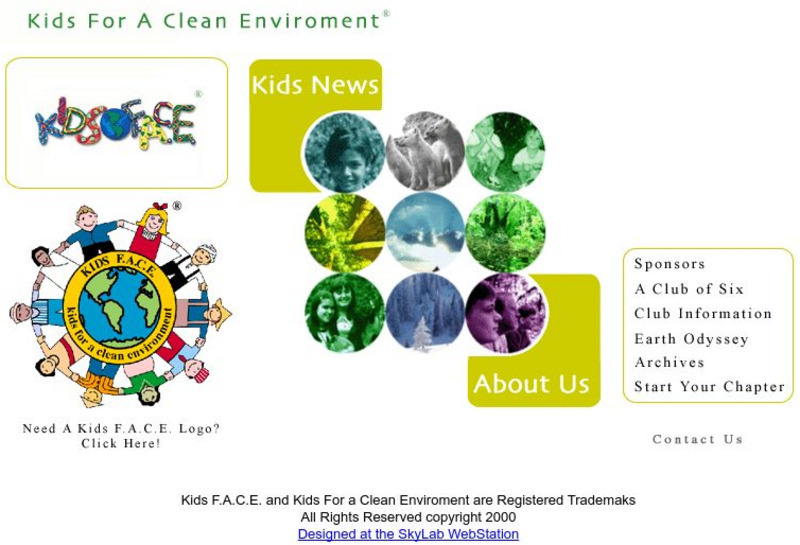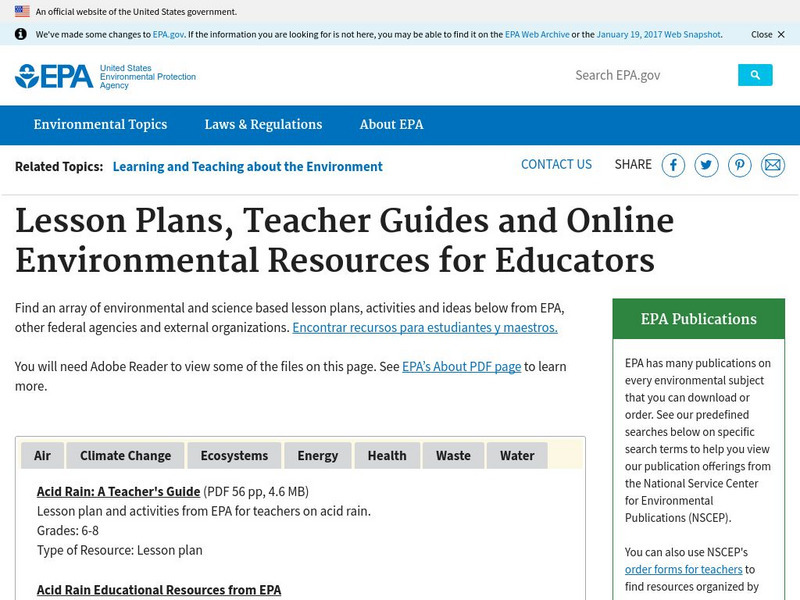Curated OER
Air Quality Presentation for Youth
Students read two books about wind and dust and then participate in a demonstration in which they plant seeds and compare dry, dusty soils to moist soils. They identify the rationale and methods for keeping airborne dust down.
Curated OER
Create Your Own Investigation
Students design and implement an experiment intended to measure and analyze the air quality of a particular location. They focus on looking for ozone and particulate pollutants.
Curated OER
Indoor Air: What's the Matter?
Students develop a greater awareness of the variety and amount of particulate matter in the air. They try to locate general sources of pollution for a specific area and develop some suggestions for improving air quality.
Curated OER
Indoor Air Quality
Students examine the role of pollution indoors rather than outdoors. They identify pollutant sources and complete a KWL chart. They also measure pollutant levels and discuss how they can improve air quality.
Curated OER
Lichens as Air Quality Indicators: A beginning lichen identification study (2003
Students use GPS and trees to explore lichens and air quality.
Curated OER
The Case of the Mysterious Red Light
Students investigate why some sunrises and sunsets are unusually bright red.
Environmental Education for Kids
Eek!: Activity: Trees and Air Quality
Site offers lessons and activities designed to supplement study of the environment and ecology. Concise explanations are presented on the importance of trees in our world. Also, problem solving and creative thinking is encouraged...
Science Buddies
Science Buddies: Air Particles and Air Quality
What does the phrase, "Like a breath of fresh air," mean to you? This common phrase can have different meanings: calming, relaxing, invigorating, energizing or clean. In this experiment you will test the quality of air by measuring the...
Texas Commission on Environmental Quality
Tceq: Lesson Plans & Resources for Teaching Environmental Sciences [Pdf]
A large collection of lesson plans on environmental topics. The lessons are broken up into the broad categories of air, water, and waste, and look at issues around quality, pollution, conservation, and recycling. There are activities for...
US Environmental Protection Agency
Epa: Air Science
Learn about some of the research that the EPA has done regarding the air we breathe. Topics range from air quality to air monitoring.
BioEd Online
Bio Ed Online: Air, Atmosphere and Living Systems
This unit includes a complete set of science lessons that enable students to creatively explore basic concepts related to air and the atmosphere, air quality, and associated issues, such as allergens in the places we live, study and work.
Encyclopedia of Earth
Encyclopedia of Earth: Air Quality in Megacities
Article discusses the impact of air pollution on human health, and surrounding environments, in large urban areas around the world. Compares the levels of smog in the cities of Los Angeles and London, discusses air monitoring programs,...
European Union
Environment for Young Europeans: Air
Part of a larger site on the environment in general, the site concentrates on air, air pollution, and climate change. From the European Union.
Other
Kids for a Clean Environment
Don't just complain about what is happening to the environment, become involved in environmental issues and make a change. Here's an organization that is enabling kids to make those changes.
Seeker
Seeker: Week of 6 30 14: Us Air Is Getting Cleaner
Learn about the satellite images showing an improvement of the quality of air in the United States.
TeachEngineering
Teach Engineering: Polluted Air = Polluted Lungs
To gain a better understanding of the roles and functions of components of the human respiratory system and our need for clean air, students construct model lungs that include a diaphragm and chest cavity. They see how air moving in and...
TeachEngineering
Teach Engineering: Optimize! Cleaner Energy Options for Rural China
Students work in engineering teams to optimize cleaner energy solutions for cooking and heating in rural China. They choose between various options for heating, cooking, hot water, and lights and other electricity, balancing between the...
TeachEngineering
Teach Engineering: Cleaning the Air
Engineers design methods of removing particulate matter from industrial sources to minimize negative effects of air pollution. In this activity, students will undertake a similar engineering challenge as they design and build a filter to...
TeachEngineering
Teach Engineering: Temperature Tells All!
Students are introduced to the health risks caused by cooking and heating with inefficient cook stoves inside homes, a common practice in rural developing communities. Students simulate the cook stove scenario and use the engineering...
TeachEngineering
Teach Engineering: Environmental Challenges in China
Students learn about the wonderful and fascinating country of China, and its environmental challenges that require engineering solutions, many in the form of increased energy efficiency, the incorporation of renewable energy, and new...
TeachEngineering
Teach Engineering: Environmental Engineering
In this unit, students explore the various roles of environmental engineers, including: environmental cleanup, water quality, groundwater resources, surface water and groundwater flow, water contamination, waste disposal and air...
New York State Dept. of Health
New York State Department of Health: Love Canal Public Health Time Bomb
Read the report to the New York governor and legislature from the Commissioner of Health laying out the dangers presented by the toxic chemicals dumped in the town of Love Canal.
US Environmental Protection Agency
Epa: Lesson Plans, Teacher Guides and Online Resources for Educators
Find an array of environmental and science-based lesson plans, activities and ideas from the EPA, other federal agencies, and external organizations.
TeachEngineering
Teach Engineering: Sensing Air Pollution
Students learn about electricity and air pollution while building devices to measure volatile organic compounds (VOC) by attaching VOC sensors to prototyping boards. In the second part of the activity, students evaluate the impact of...










![Tceq: Lesson Plans & Resources for Teaching Environmental Sciences [Pdf] Lesson Plan Tceq: Lesson Plans & Resources for Teaching Environmental Sciences [Pdf] Lesson Plan](https://d15y2dacu3jp90.cloudfront.net/images/attachment_defaults/resource/large/FPO-knovation.png)













